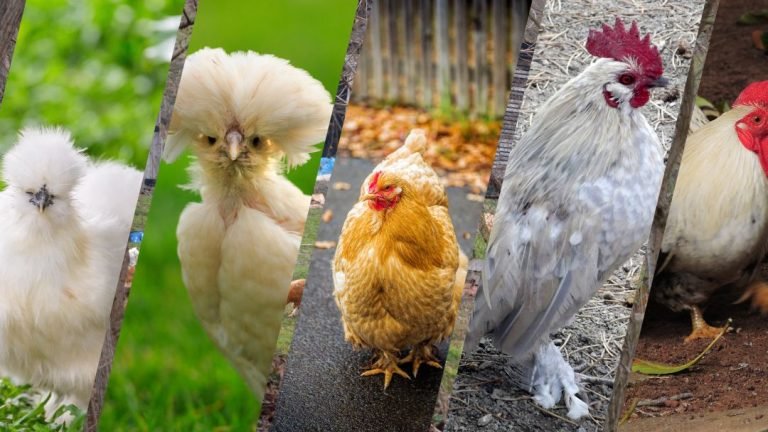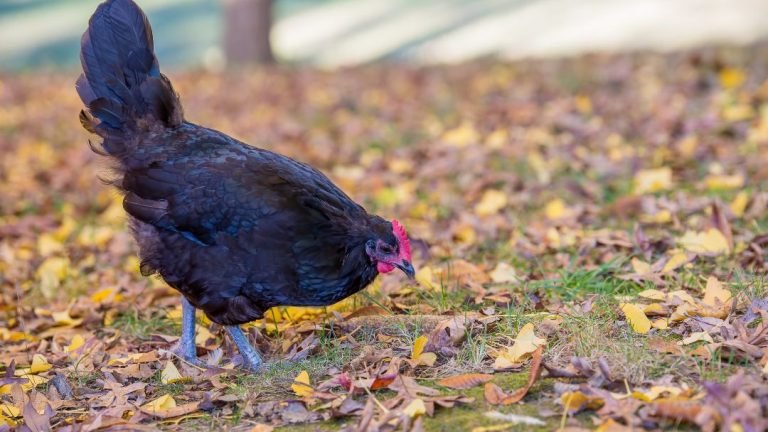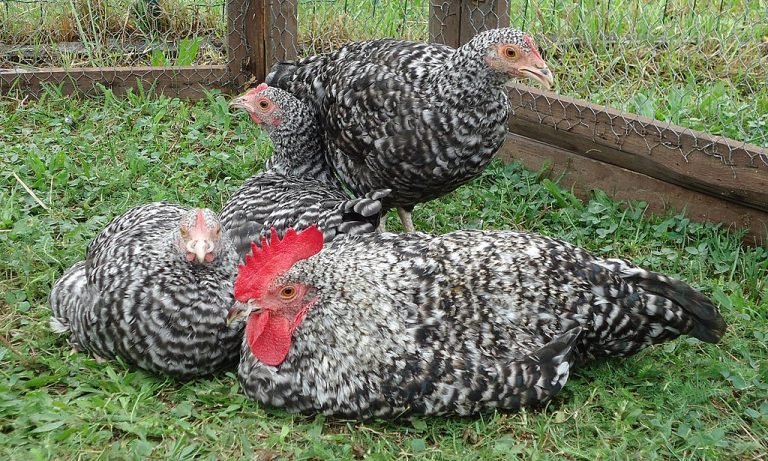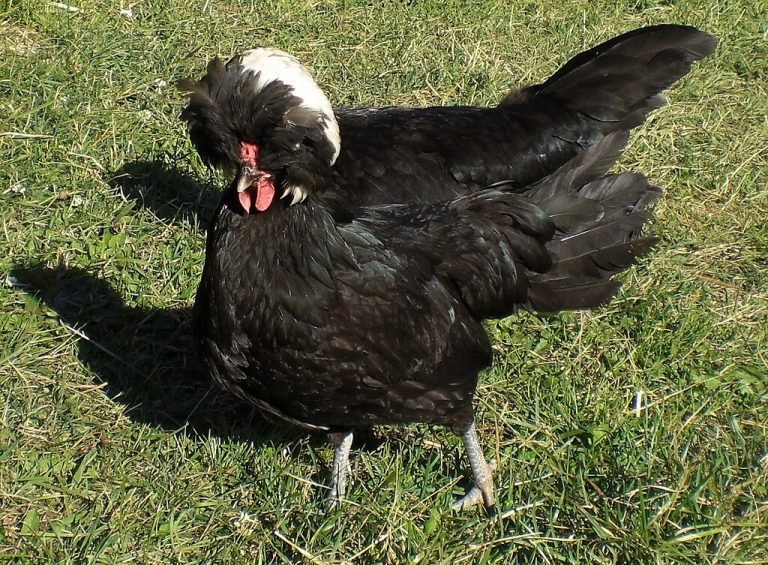The Winnebago chicken breed and Wyandotte chicken breed are two different types of chickens. Winnebago and Wyandotte are distinct chicken breeds with their own unique characteristics.
From their appearance to their egg-laying capabilities, these breeds offer distinct qualities that make them popular choices for backyard chicken enthusiasts. Whether you’re looking for a chicken breed that is known for its beautiful feathers or one that consistently produces eggs, both the Winnebago and Wyandotte breeds have something to offer.
We will explore the key features of each breed and help you make an informed decision on which one would be the best fit for your flock. So, let’s dive into the fascinating world of Winnebago and Wyandotte chickens!
History
The Winnebago and Wyandotte chicken breeds both have fascinating histories that showcase their unique characteristics and contributions to the poultry world. Let’s dive into the stories behind these beloved breeds:
- The Wyandotte chicken breed originated in the United States during the late 1800s, with its development starting in New York.
- Shortly after its creation, the Wyandotte breed gained widespread recognition and popularity among poultry enthusiasts.
- These chickens were a result of crossing various breeds like the Silver Spangled Hamburg, Buff Cochins, Dark Brahmas, and a few others.
- One of the standout features of Wyandottes is their well-rounded body, adorned with beautiful feather patterns and color variations.
- They come in a variety of colors, including Silver Laced, Golden Laced, Blue Laced Red, and Black, among others.
- Wyandottes are known for their versatility, as they excel in both meat and egg production. Additionally, their calm and gentle temperament makes them a favorite among chicken keepers worldwide.
Understanding the history of the Winnebago and Wyandotte chicken breeds allows us to appreciate their individual characteristics and the efforts made to maintain their existence. Whether it’s the Winnebago with its unique black and white plumage or the versatile and beautiful Wyandotte, both breeds have made their mark in the world of poultry.

General Characteristics
The Winnebago and Wyandotte chicken breeds possess distinct general characteristics that make them sought-after. With their beautiful plumage and friendly personalities, these breeds are popular choices among poultry enthusiasts.
The Winnebago and Wyandotte chicken breeds exhibit unique traits that make them popular choices among poultry enthusiasts. Keep reading to discover the general characteristics of these two fascinating breeds:
- Dual-purpose breed with excellent meat and egg production.
- Well-balanced and compact body shape.
- Medium to large size, with hens weighing around 6 pounds and roosters averaging 8 pounds.
- Recognized for their striking plumage, featuring intricate lacing or solid colors like gold, silver, and black.
- Calm and friendly disposition, making them popular among families and children.
- Thrive in various climates, adapting well to both hot and cold conditions.
- Reliable layers, providing approximately 200-220 medium-sized light brown eggs per year.
- Exhibits a prominent rose comb, which protects them from cold temperatures and frostbite.
These general characteristics give you a glimpse into what makes the Winnebago and Wyandotte chicken breeds special. Whether you prioritize versatility, egg production, or aesthetic appeal, these breeds are sure to be a delightful addition to your flock.
Temperament
Are you considering adding a new chicken breed to your flock? Choosing the right breed can make a significant impact on your overall chicken-keeping experience. Two popular options for backyard chicken enthusiasts are the Winnebago and Wyandotte breeds. In this blog post, we will explore the temperament of these breeds to help you make an informed decision.
- Friendly nature: The Winnebago breed is known for being docile and friendly, making them an excellent choice for families or individuals seeking a calm and approachable chicken.
- Sociable demeanor: Winnebagos enjoy the company of humans and other chickens, showcasing their sociable and cooperative nature.
- Docile around children: These chickens have a reputation for being patient and tolerant, making them an ideal choice if you have children who will be interacting with the flock.
- Moderate activity levels: Winnebagos are neither overly active nor lethargic, striking a balance that allows them to adapt well to various environments.
- Confident and assertive: Wyandottes are known for their confident and self-assured nature, which can make them excellent flock leaders.
- Curious and intelligent: These chickens have a sharp intellect and are quick to explore their surroundings. Their inquisitive nature makes them entertaining to observe.
- Independent streak: Unlike some other breeds, Wyandottes have a level of independence and prefer to have some freedom in their environment.
- Tolerant of various climates: Wyandottes can adapt well to different climates, making them a versatile choice for backyard flock owners.
Both the Winnebago and Wyandotte breeds have their unique temperament traits. Understanding these characteristics can help you choose the breed that aligns with your preferences and flock dynamics. Whether you prioritize a friendly and sociable nature or seek a confident and independent chicken, consider these aspects when making your decision.
Comb Types
Comb types are a distinguishing feature of both Winnebago and Wyandotte chicken breeds. The shape and structure of the comb on a chicken’s head can vary, and it plays an important role in the bird’s health and adaptability to different climates.
Let’s take a closer look at the comb types of these breeds:
Looking at the Winnebago chicken breed, we can identify two main comb types commonly found within this breed:
- Single Comb: This comb type has a single, upright row of smooth-edged points. It is the most common comb type and is found in various chicken breeds. The single comb is well-suited for withstanding both hot and cold climates.
- Rose Comb: As the name suggests, the rose comb resembles the petals of a rose. This comb type is compact, with a low profile and a defined cluster of points. The rose comb is beneficial for Winnebago chickens living in colder regions, as it provides protection against frostbite.
- Pea Comb: The Wyandotte breed is well-known for its pea comb, which resembles three small, roundish bumps on the chicken’s head. The pea comb is ideal for chickens in hotter regions, as it allows for better heat dissipation and reduces the risk of frostbite.
Now that we’ve explored the comb types of both breeds, it’s clear that Winnebago and Wyandotte chickens offer variations suited to different climates. Whether it’s the single comb for the Winnebago or the rose and pea combs for the Wyandotte, these features demonstrate the adaptability and resilience of these chicken breeds.
Conclusion
Whether you choose the Winnebago or Wyandotte chicken breed, you can expect to add a wonderful addition to your flock. Both breeds have their unique characteristics and benefits. The Winnebago offers a stunning appearance with its vibrant plumage and friendly temperament, making it a favorite among chicken enthusiasts.
On the other hand, the Wyandotte is known for its dual-purpose qualities, providing both meat and egg production. No matter your preference, both breeds are reliable and versatile choices. Remember to consider factors such as space, climate, and your specific needs when making your decision.
Ultimately, the Winnebago and Wyandotte breeds offer exceptional qualities that can bring joy and productivity to any chicken owner. So, why wait? Start exploring these wonderful breeds and discover the joy of raising your own backyard chickens today!






